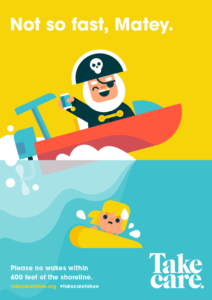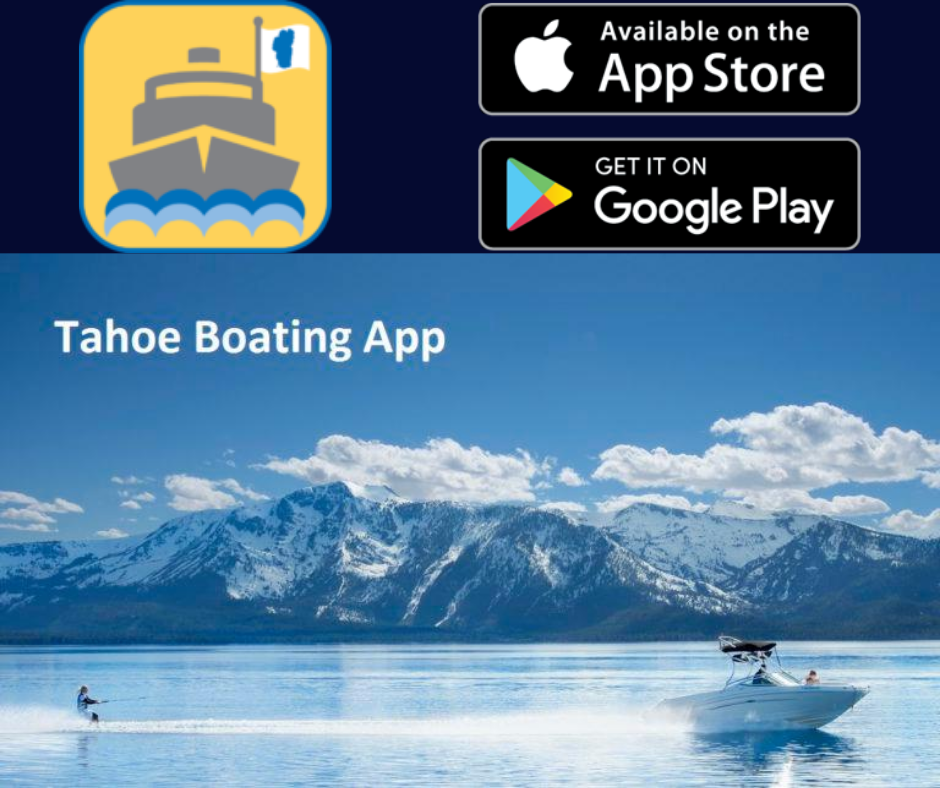Watercraft
Water Pollution & Watercraft
In June 1997, TRPA voted to ban highly polluting carbureted, two-stroke engines that powered personal watercraft and many outboard motorboats cruising Lake Tahoe. Two years later when the standards went into effect, only the cleaner, direct fuel-injected two-stroke engines could operate on the lakes in the Tahoe Region, including Fallen Leaf Lake, Upper and Lower Echo Lakes, and Cascade Lake. This ban resulted in a dramatic drop in the levels of gasoline pollution measured in Lake Tahoe’s water.
Legal Watercraft
Engines that meet EPA 2006 Standards or California Air Resources Board (CARB) 2001 Standards are allowed on lakes in the Tahoe Region.
Personal Watercraft
- All Four-Stroke makes and models
- All Two-Stroke Direct Fuel Injection makes and models
Outboard Engines
All Four-Stroke makes and models such as:
- Honda
- Mercury
- Yamaha
- Johnson
- Suzuki
- Nissan
Direct Fuel-Injected (DFI) Two-Stroke makes and models such as:
- Evinrude E-TEC Direct Injection Engines
- Mercury Opti Max Direct Injection
- Yamaha High Pressure Direct Injection
Inboard Engines
All Four-Stroke gasoline engines
All Four-Stroke diesel engines
For further questions regarding legal engines, call Steve Sweet at 775-589-5250.
600-Foot No-Wake Zone
Slowing down to 5 mph or less within 600 feet of the shoreline can help protect Lake Tahoe’s environment. The TRPA Watercraft Team enforces a 600-foot no-wake zone around the shoreline of Lake Tahoe to minimize the noise impacts of motorized watercraft on residents, visitors, and wildlife. Additionally, wakes created within this no-wake zone can cause shoreline erosion, seriously impair gamefish spawning areas, and reduce light essential to submerged vegetation.
How far is 600 Feet? Almost the length of two football fields. To measure, cruise at idle speed from the shore for about 90 seconds.
Tahoe Boating App
TRPA and partners are proud to bring you the Tahoe Boating app to inform boaters about Lake Tahoe, no-wake zone boundaries, area attractions, and how to enjoy the lake safely and responsibly. Lake Tahoe has no-wake zones to keep boaters, paddlers, and swimmers safe.
Download the Tahoe Boating app – an interactive map of no-wake zones, points of interest, marinas, boat ramps, bathrooms, and other landmarks or hazards that works offline without a data connection.
The app includes:
- an interactive map that shows a boat’s location relative to no‐wake zones
- information about boating safety, aquatic invasive species, and emergency contacts
- locations of fuel stations and bathrooms
- Lake Tahoe points of interest including detailed information and photos
If you encounter any bugs, glitches, lack of functionality, or other problems with the Tahoe Boating app, please contact gis@trpa.org.
Click here to view a map of all of the Tahoe Boating app data.
Watercraft Inspection Program
Since 2008, the nationally recognized Watercraft Inspection Program has prevented new aquatic invasive species (AIS) from entering the lake. The program calls for the inspection of all motorized watercraft to ensure new AIS, such as quagga and zebra mussels, are not introduced.
The Tahoe Keepers free self-inspection and decontamination training program provides paddlers with the information needed to help stop the spread of aquatic invasive species. Paddlers can also find maps and planning resources for the Lake Tahoe Water Trail at laketahoewatertrail.org
For more information about launching a boat or paddle craft in Lake Tahoe, visit tahoeboatinspections.com.
Watercraft FAQs
Which boat engines are still allowed on lakes in the Tahoe Region?
Direct Fuel Injected (DFI) two–stroke engines, diesel engines, any two-stroke engine that meets or exceeds the 2006 EPA emissions standard, and four−stroke engines are allowed on lakes in the Tahoe Region.
Why were these restrictions put into effect?
Studies have shown that carbureted two−stroke engines may discharge up to 20 to 30 percent of their fuel, unburned, into the air and water. In order to reduce the impact of motorized vessels on water quality, TRPA adopted new regulations, effective June 1, 1999, restricting the use of certain marine engines on lakes in the Tahoe region.
Are small (10 horsepower or less) two−stroke engines allowable on sailboats or small vessels?
No. These types of engines were given an exemption that expired on October 1, 2001. All two–stroke engines must be direct fuel injected in order to comply with the regulations.
Are there other lakes in the Tahoe Basin that have boat engine regulations?
Yes − the same regulations apply to Cascade Lake, Echo Lake, and Fallen Leaf Lake.
How can I determine if my two-stroke outboard engine is compliant?
At this time, all Direct Fuel Injected two stroke outboard engines are compliant. Common examples include the ETEC (Evinrude), OptimaxTM (Mercury), or HPDITM (Yamaha) logo.
How can I determine if my personal watercraft (PWC) is Tahoe legal?
Any PWC is Tahoe legal if it is Direct Fuel Injected (DFI) or four stroke.
What else can I do to limit the environmental impacts of boating?
- Never attempt to alter or adjust new technology outboard or personal watercraft engines
- Check, clean, and flush your engine well away from the water
- Refuel away from the water and use fuel spill prevention devices
- Immediately repair gas and oil leaks
- Use bilge pillows and engine pads to absorb oil and fuel
- Keep your engine professionally tuned to ensure clean performance
Check out this boating map for more suggestions.
Can I drain my gray or black water holding tanks into Lake Tahoe?
No. The Environmental Protection Agency designates Lake Tahoe as an “Outstanding Natural Resource Water”, and it’s a drinking water source for many people. Federal, state, and TRPA laws prohibit the discharge of any material – liquid or solid. Please utilize the pumpouts available at marinas located around the lake and keep your trash safely secured while underway.


